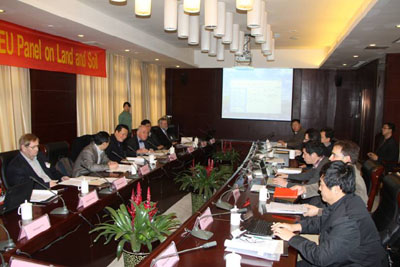Yunxia Wang Lianxin Yang Kazuhiko Kobayashi Jianguo Zhu Charles P. Chen Kaifang Yang Haoye Tang Yulong Wang. Investigations on spikelet formation in hybrid rice as affected by elevated tropospheric ozone concentration in China. Agriculture Ecosystems and Environment 2012 150: 63– 71.
Abstract
This study investigated the impact of elevated ozone concentration ([O3]) on grain yield of rice in relation to the changes in spikelet formation which plays a critical role in securing a sufficient number of spikelets per land area for a higher yield. Using a free air gas concentration enrichment (FACE) facility for O3 fumigation in China two contrasting rice cultivars were exposed to either ambient (38 ppb) or elevated [O3] (47 ppb) from tillering stage to final harvest in 2008. A 23% increase in [O3] decreased grain yield of Yangdao6 and Shanyou63 by 6% and 27% respectively. The yield loss was driven primarily by a decrease in the number of spikelets per panicle rather than changes in the other yield components. The large reduction observed in panicle size of Shanyou63 under ozone stress resulted from both the inhibition of spikelet differentiation and promotion of spikelet degeneration which was associated with decreased accumulation of nitrogen and biomass up to the heading stage. The results of this experiment indicated that the yield loss in rice under ozone exposure resulted primarily from negative effects on spikelet formation and that a better understanding of spikelet formation process is indispensable for the assessment of rice yield response to future higher ground-level [O3].


 μmol
μmol



